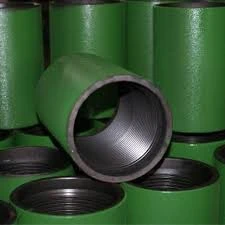- Afrikaans
- Albanian
- Amharic
- Arabic
- Armenian
- Azerbaijani
- Basque
- Belarusian
- Bengali
- Bosnian
- Bulgarian
- Catalan
- Cebuano
- Corsican
- Croatian
- Czech
- Danish
- Dutch
- English
- Esperanto
- Estonian
- Finnish
- French
- Frisian
- Galician
- Georgian
- German
- Greek
- Gujarati
- Haitian Creole
- hausa
- hawaiian
- Hebrew
- Hindi
- Miao
- Hungarian
- Icelandic
- igbo
- Indonesian
- irish
- Italian
- Japanese
- Javanese
- Kannada
- kazakh
- Khmer
- Rwandese
- Korean
- Kurdish
- Kyrgyz
- Lao
- Latin
- Latvian
- Lithuanian
- Luxembourgish
- Macedonian
- Malgashi
- Malay
- Malayalam
- Maltese
- Maori
- Marathi
- Mongolian
- Myanmar
- Nepali
- Norwegian
- Norwegian
- Occitan
- Pashto
- Persian
- Polish
- Portuguese
- Punjabi
- Romanian
- Russian
- Samoan
- Scottish Gaelic
- Serbian
- Sesotho
- Shona
- Sindhi
- Sinhala
- Slovak
- Slovenian
- Somali
- Spanish
- Sundanese
- Swahili
- Swedish
- Tagalog
- Tajik
- Tamil
- Tatar
- Telugu
- Thai
- Turkish
- Turkmen
- Ukrainian
- Urdu
- Uighur
- Uzbek
- Vietnamese
- Welsh
- Bantu
- Yiddish
- Yoruba
- Zulu
Exploring the Benefits and Applications of Steel Coupling in Modern Engineering
Understanding Steel Coupling A Key Element in Structural Engineering
Steel coupling is an essential concept in the realm of structural engineering, often overlooked yet pivotal for the stability and integrity of various constructions. Couplings are used to join two or more structural elements, ensuring that they work together efficiently under loads and stresses. In this article, we will delve into what steel couplings are, their types, applications, and significance in modern architecture and construction.
What Are Steel Couplings?
Steel couplings are mechanical devices designed to provide a connection between multiple steel components. They facilitate the transfer of loads between different structural members, such as beams, columns, and trusses. By using steel as the material for couplings, engineers take advantage of its high strength, durability, and ability to withstand adverse environmental conditions.
Steel couplings can be classified into various types based on their design and application. Common types include
1. Rigid Couplings These offer a strong and direct connection between two components, providing minimal allowance for misalignment. Rigid couplings are often used in applications where precision and load-bearing capacity are paramount.
2. Flexible Couplings Allow for a degree of misalignment between connected components, thus accommodating slight shifts during operation or due to environmental changes. Flexible couplings are particularly useful in dynamic applications, such as machinery and equipment.
3. Split Couplings Designed to be installed on existing steel members without the need for complete disassembly. These couplings are advantageous in retrofitting projects or where access is limited.
steel coupling

Applications of Steel Couplings
Steel couplings play a crucial role in various architectural and civil engineering projects. Their applications range from residential buildings to large-scale infrastructure, including bridges, high-rises, and industrial facilities. Steel couplings are particularly significant in areas susceptible to seismic activity. In such regions, the ability to absorb and distribute forces generated by earthquakes is vital for the safety of the structure. Couplings enable this by allowing different parts of a building to move independently while still being connected.
In addition, steel couplings are widely used in industrial machinery and equipment, ensuring efficient transmission of torque and alignment in rotating components
. They enhance operational reliability, reduce wear and tear, and minimize the risk of breakdowns, which is crucial for maintaining productivity in manufacturing settings.Importance of Steel Couplings in Modern Engineering
In the context of modern engineering challenges, the significance of steel couplings cannot be understated. As buildings grow taller and structures more complex, the demands on structural connections increase correspondingly. Steel couplings provide the necessary strength and flexibility, enabling engineers to design more innovative and durable structures.
Moreover, the use of steel couplings can contribute to sustainability in construction. By ensuring that structures withstand the test of time and environmental pressures, they reduce the need for frequent repairs and replacements, thus saving materials and energy in the long run.
Conclusion
In summary, steel couplings are a vital component of modern structural engineering. They provide the necessary connections to ensure structural integrity and load distribution in a wide array of applications. As the field continues to evolve with new technologies and construction challenges, the development and implementation of effective coupling solutions will remain critical. Understanding the role of steel couplings not only enhances the safety and reliability of structures but also paves the way for innovative architectural designs that can withstand the future’s demands. Through their critical function, steel couplings serve as the backbone of many of the structures we rely on every day.
-
Well Casing Extension Couplings – Applications and InstallationNewsJun.06,2025
-
Types of Crossover Subs in Drilling & CompletionNewsJun.06,2025
-
Key Features of High-Quality Tubing Pup JointsNewsJun.06,2025
-
Installation and Maintenance Tips for Steel Couplings for PipeNewsJun.06,2025
-
How to Select the Right Pup Joint for Oil & Gas OperationsNewsJun.06,2025
-
Applications of Stainless Steel Pipe CouplingsNewsJun.06,2025







